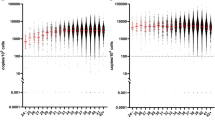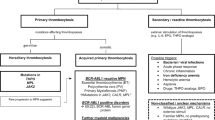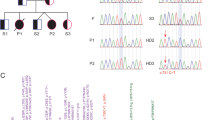Abstract
Hemolytic anemias are a group of disorders with varied clinical and molecular heterogeneity. They are characterized by decreased levels of circulating erythrocytes in blood. The pathognomic finding is a reduced red cell life span with severe anemia or, compensated hemolysis accompanied by reticulocytosis. The diagnostic workup or laboratory approach for hemolytic anemias is based on methodical step-wise testing which includes red blood cell morphology, hematological indices with increased reticulocyte count along with clinical features of hemolytic anemias. If conventional laboratory tests are unable to detect the underlying cause of hemolysis, genetic testing is recommended. Sanger sequencing along with conventional testing is the most efficient way to diagnose the underlying genetic causes, especially in thalassemias/hemoglobinopathies, if required. However, hemolytic anemias being highly heterogeneous disorders, next-generation sequencing-based screening is rapidly becoming an efficient way to decipher the etiologies where common causes have been excluded.



Similar content being viewed by others
References
Siddon AJ, Tormey CA. Chapter Six: the chemical and laboratory investigation of hemolysis. Adv Clin Chem. 2019;89:215–58.
Rets A, Clayton AL, Christensen RD, Agarwal AM. Molecular diagnostic update in hereditary hemolytic anemia and neonatal hyperbilirubinemia. Int J Lab Hematol. 2019;41:95–101.
Sachdeva MUS, Varma N, Chandra D, Bose P, Malhotra P, Varma S. Multiparameter FLAER-based flow cytometry for screening of paroxysmal nocturnal hemoglobinuria enhances detection rates in patients with aplastic anemia. Ann Hematol. 2015;94:721–8.
Higgs DR. The molecular basis of α-thalassemia. Cold Spring Harb Perspect Med. 2013;3:a011718.
Sharma P, Das R. The pursuit of rare hemoglobins. Indian J Pathol Microbiol. 2016;59:102–3.
Sharma P, Das R, Trehan A, et al. Impact of iron deficiency on hemoglobin A2% in obligate β-thalassemia heterozygotes. Int J Lab Hematol. 2015;37:105–11.
Sharma P, Das R. Cation-exchange high-performance liquid chromatography for variant hemoglobins and HbF/A2: what must hematopathologists know about methodology? World J Methodol. 2016;6:20–4.
Cappellini MD, Fiorelli G. Glucose-6-phosphate dehydrogenase deficiency. Lancet. 2008;371:64–74.
Brandt O, Rieger A, Geusau A, Stingl G. Peas, beans, and the pythagorean theorem - the relevance of glucose-6-phosphate dehydrogenase deficiency in dermatology. J Dtsch Dermatol Ges. 2008;6:534–9.
World Health Organisation. Glucose-6-phosphate dehydrogenase deficiency. WHO Working Group. Bull World Health Organ. 1989;67:601–11.
Beutler E, Kuhl W, Gelbart T, Forman L. DNA sequence abnormalities of human glucose-6-phosphate dehydrogenase variants. J Biol Chem. 1991;266:4145–50.
Canu G, De Bonis M, Minucci A, Capoluongo E. Red blood cell PK deficiency: an update of PK-LR gene mutation database. Blood Cells Mol Dis. 2016;57:100–9.
Manco L, Ribeiro ML, Almeida H, Freitas O, Abade A, Tamagnini G. PK-LR gene mutations in pyruvate kinase deficient portuguese patients. Br J Haematol. 1999;105:591–5.
Fermo E, Bianchi P, Chiarelli LR, et al. Red cell pyruvate kinase deficiency: 17 new mutations of the PK-LR gene. Br J Haematol. 2005;129:839–46.
Zanella A, Fermo E, Bianchi P, Valentini G. Red cell pyruvate kinase deficiency: molecular and clinical aspects. Br J Haematol. 2005;130:11–25.
Marcello AP, Vercellati C, Fermo E, et al. A case of congenital red cell pyruvate kinase deficiency associated with hereditary stomatocytosis. Blood Cells Mol Dis. 2008;41:261–2.
Jamwal M, Aggarwal A, Das A, et al. Next-generation sequencing unravels homozygous mutation in glucose-6-phosphate isomerase, GPIc.1040G>A (p.Arg347His) causing hemolysis in an Indian infant. Clin Chim Acta. 2017;468:81–4.
Kedar PS, Gupta V, Dongerdiye R, Chiddarwar A, Warang P, Madkaikar MR. Molecular diagnosis of unexplained haemolytic anaemia using targeted next-generation sequencing panel revealed (p.Ala337Thr) novel mutation in GPI gene in two Indian patients. J Clin Pathol. 2019;72:81–5.
Jamwal M, Aggarwal A, Palodi A, et al. A nonsense variant in the hexokinase 1 gene (HK1) causing severe non-spherocytic haemolytic anaemia: genetic analysis exemplifies ambiguity due to multiple isoforms. Br J Haematol. 2019;186:e142–5.
Koralkova P, Van Solinge WW, Van Wijk R. Rare hereditary red blood cell enzymopathies associated with hemolytic anemia - pathophysiology, clinical aspects, and laboratory diagnosis. Int J Lab Hematol. 2014;36:388–97.
Bolton-Maggs PHB, Langer JC, Iolascon A, Tittensor P, King MJ. Guidelines for the diagnosis and management of hereditary spherocytosis - 2011 update. Br J Haematol. 2012;156:37–49.
Bianchi P, Fermo E, Vercellati C, et al. Diagnostic power of laboratory tests for hereditary spherocytosis: a comparison study in 150 patients grouped according to molecular and clinical characteristics. Haematologica. 2012;97:516–23.
Joshi P, Aggarwal A, Jamwal M, et al. A comparative evaluation of eosin-5′-maleimide flow cytometry reveals a high diagnostic efficacy for hereditary spherocytosis. Int J Lab Hematol. 2016;38:520–6.
King M-J, Telfer P, MacKinnon H, et al. Using the eosin-5-maleimide binding test in the differential diagnosis of hereditary spherocytosis and hereditary pyropoikilocytosis. Clin Cytom. 2008;74B:244–50.
Suemori S, Wada H, Nakanishi H, Tsujioka T, Sugihara T, Tohyama K. Analysis of hereditary elliptocytosis with decreased binding of eosin-5-maleimide to red blood cells. Biomed Res Int. 2015;2015:451861.
King MJ, Behrens J, Rogers C, Flynn C, Greenwood D, Chambers K. Rapid flow cytometric test for the diagnosis of membrane cytoskeleton-associated haemolytic anaemia. Br J Haematol. 2000;111:924–33.
Jamwal M, Aggarwal A, Kumar V, et al. Disease-modifying influences of coexistent G6PD-deficiency, gilbert syndrome and deletional alpha thalassemia in hereditary spherocytosis: a report of three cases. Clin Chim Acta. 2016;458:51–4.
Hunt L, Greenwood D, Heimpel H, Noel N, Whiteway A, King MJ. Toward the harmonization of result presentation for the eosin-5′-maleimide binding test in the diagnosis of hereditary spherocytosis. Cytometry B Clin Cytom. 2015;88B:50–7.
Yawata Y. Characteristics of red cell membrane disorders in the Japanese population. Rinsho Byori. 1997;45:367–76.
Facer CA. Erythrocytes carrying mutations in spectrin and protein 4.1 show differing sensitivities to invasion by plasmodium falciparum. Parasitol Res. 1995;81:52–7.
Gallagher PG. Abnormalities of the erythrocyte membrane. Pediatr Clin N Am. 2013;60:1349–62.
King MJ, Garçon L, Hoyer JD, et al. ICSH guidelines for the laboratory diagnosis of nonimmune hereditary red cell membrane disorders. Int J Lab Hematol. 2015;37:304–25.
Kedar PS, Colah RB, Kulkarni S, Ghosh K, Mohanty D. Experience with eosin-5′-maleimide as a diagnostic tool for red cell membrane cytoskeleton disorders. Clin Lab Haematol. 2003;25:373–6.
King MJ, Zanella A. Hereditary red cell membrane disorders and laboratory diagnostic testing. Int J Lab Hematol. 2013;35:237–43.
King MJ, Jepson MA, Guest A, Mushens R. Detection of hereditary pyropoikilocytosis by the eosin-5-maleimide (EMA)-binding test is attributable to a marked reduction in EMA-reactive transmembrane proteins. Int J Lab Hematol. 2011;33:205–11.
Wrong O, Bruce LJ, Unwin RJ, Toye AM, Tanner MJA. Band 3 mutations, distal renal tubular acidosis, and southeast Asian ovalocytosis. Kidney Int. 2002;62:10–9.
Reardon DM, Seymour CA, Cox TM, Pinder JC, Schofield AE, Tanner MJA. Hereditary ovalocytosis with compensated haemolysis. Br J Haematol. 1993;85:197–9.
Rasool J, Manzoor F, Bhat S, Bashir N, Geelani S. Hereditary stomatocytosis: first case report from valley of Kashmir. Med J Dr DY Patil Univ. 2015;8:347–9.
Jamwal M, Aggarwal A, Sachdeva MUS, et al. Overhydrated stomatocytosis associated with a complex RHAG genotype ancluding a novel de novo mutation. J Clin Pathol. 2018;71:648–52.
Stewart GW, Amess JA, Eber SW, et al. Thrombo-embolic disease after splenectomy for hereditary stomatocytosis. Br J Haematol. 1996;93:303–10.
Rees DC, Iolascon A, Carella M, et al. Stomatocytic haemolysis and macrothrombocytopenia (mediterranean stomatocytosis/macrothrombocytopenia) is the haematological presentation of phytosterolaemia. Br J Haematol. 2005;130:297–309.
Jamwal M, Aggarwal A, Maitra A, et al. First report of mediterranean stomatocytosis/macrothrombocytopenia in an Indian family: a diagnostic dilemma. Pathology. 2017;49:811–5.
Aggarwal A, Jamwal M, Das R. Molecular genetics of inherited red cell membrane disorders. In: Saxena R, Pati H, editors. Hematopathology. Singapore: Springer Singapore; 2019. p. 77–90.
Stitziel NO, Kiezun A, Sunyaev S. Computational and statistical approaches to analyzing variants identified by exome sequencing. Genome Biol. 2011;12:227.
Biesecker LG, Burke W, Kohane I, Plon SE, Zimmern R. Next-generation sequencing in the clinic: are we ready? Nat Rev Genet. 2012;13:818–24.
Agarwal AM, Nussenzveig RH, Reading NS, et al. Clinical utility of next-generation sequencing in the diagnosis of hereditary haemolytic anaemias. Br J Haematol. 2016;174:806–14.
Russo R, Andolfo I, Manna F, et al. Multi-gene panel testing improves diagnosis and management of patients with hereditary anemias. Am J Hematol. 2018;93:672–82.
Roy NBA, Wilson EA, Henderson S, et al. A novel 33-gene targeted resequencing panel provides accurate, clinical-grade diagnosis and improves patient management for rare inherited anaemias. Br J Haematol. 2016;175:318–30.
Sun Y, Ruivenkamp CAL, Hoffer MJV, et al. Next-generation diagnostics: gene panel, exome, or whole genome? Hum Mutat. 2015;36:648–55.
Acknowledgements
The authors thank the clinical and laboratory staff involved in patient management and laboratory diagnosis. They thank the PGIMER, Chandigarh; Department of Biotechnology (Ministry of Science and Technology, Government of India), New Delhi and Indian Council for Medical Research, New Delhi for various institutional and extramural research grants.
Author information
Authors and Affiliations
Contributions
MJ, PS and RD have written the manuscript and all authors approve the final version of the article. RD is the gauarantor for this paper.
Corresponding author
Ethics declarations
Conflict of Interest
None.
Source of Funding
The authors thank the PGIMER, Chandigarh; Department of Biotechnology (Ministry of Science and Technology, Government of India), New Delhi and Indian Council for Medical Research, New Delhi for various institutional and extramural research grants.
Additional information
Publisher’s Note
Springer Nature remains neutral with regard to jurisdictional claims in published maps and institutional affiliations.
Rights and permissions
About this article
Cite this article
Jamwal, M., Sharma, P. & Das, R. Laboratory Approach to Hemolytic Anemia. Indian J Pediatr 87, 66–74 (2020). https://doi.org/10.1007/s12098-019-03119-8
Received:
Accepted:
Published:
Issue Date:
DOI: https://doi.org/10.1007/s12098-019-03119-8




